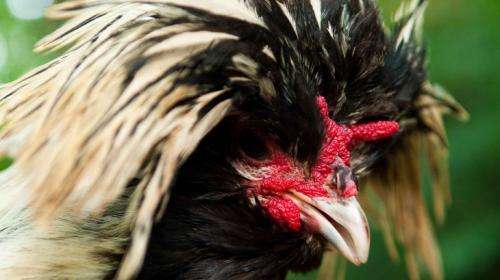Modern domestic animal traits may have appeared far more recently than previously thought

Modern domestic animal traits that set them apart from their wild ancestors, such as small dogs, or the gnarled combs on chickens heads, may have appeared far more recently than previously thought, according to new research.
Many believe such common characteristics may have dated back to when humans first domesticated animals thousands of years ago, but a new analysis of ancient DNA from chicken bones suggests they may only have been around for a few hundred years.
The study, involving academics from the University of Aberdeen and led by Durham University, suggests that humans have been able to alter the appearance of domestic animals much more rapidly than previously thought. The findings are published on Monday in the journal Proceedings of the National Academy of Sciences.
The team says that the results of the ancient DNA analysis call into question many long held preconceptions about the evolution of animals we share our lives with.
"Looking today at our pets and livestock including dogs, cows, sheep, and chickens, there's been an assumption that if a particular trait is found in a majority of breeds, that it must have made its first appearance at the dawn of domestication thousands of years ago," explained Dr Greger Larson from Durham University's Department of Archaeology. "That makes sense since it is reasonable to assume a correlation between ubiquity and time – the more common a trait is, the longer it's likely to have been kicking around.
"Our research, however, suggests that even some of the most common traits, like yellow legs in chickens, were extremely rare as recently as 500 years ago, and that humans can drive selection rapidly, making it look like the trait has a deep history. In this way, domestic animals evolve more like fashion and culture than like wild animals. Just like taking a 'selfie' on your smart phone is both recent and universal, chickens across the world possess traits their recent ancestors didn't have."
Studying ancient DNA from chicken bones, the team isolated and traced early signs of two genes associated with modern domestic chickens – their yellow skin and a behavioural gene involved in thyroid hormone production.
By looking at patterns of variation in these genes through time, they found that few European chickens from 2,000 years ago to 500 years ago had yellow skin, and only a small percentage possessed the behavioural trait now ubiquitous in chicken populations worldwide.
"This could have implications for many other animals", adds Professor Keith Dobney from the University of Aberdeen's School of Archaeology. "Many other traits presumed to have long histories including hairlessness in Mexican and Peruvian dogs, or dorsal ridges in Vietnamese, Thai and Rhodesian Ridgebacks may have originated very recently, and an ancient DNA approach will help to tell the stories of those specific traits."
Dr Linus Girdland Flink from the University of Aberdeen adds: "Essentially, we show that it can be very misleading to use the present day as a proxy for the past. The past is a very 'different country', and the domestic plants and animals we have today often bear little resemblance to those even a few hundred years ago. This really demonstrates the value and importance of studying archaeological remains."
More information:
phys.org/news/2014-04-chickens … entists-genetic.html
phys.org/news/2014-04-archaeol … s-domestication.html
phys.org/news/2014-04-mystery- … ication-deepens.html
Provided by University of Aberdeen